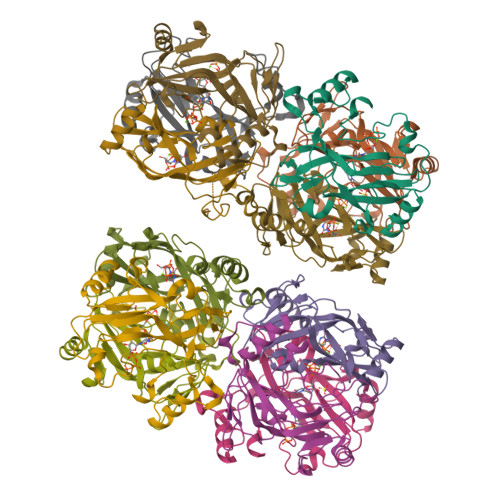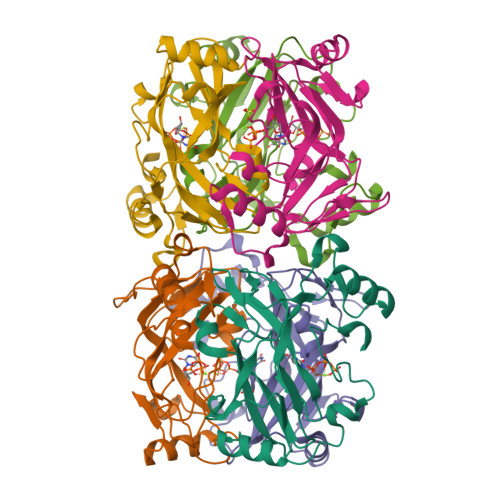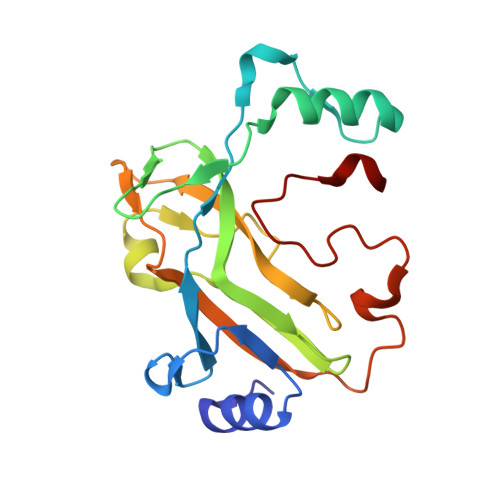Mutational Analysis of the Nucleotide Binding Site of Escherichia Coli Dctp Deaminase.
Thymark, M., Johansson, E., Larsen, S., Willemoes, M.(2008) Arch Biochem Biophys 470: 20
- PubMed: 17996716
- DOI: https://doi.org/10.1016/j.abb.2007.10.013
- Primary Citation of Related Structures:
2V9X - PubMed Abstract:
In Escherichia coli and Salmonella typhimurium about 80% of the dUMP used for dTMP synthesis is derived from deamination of dCTP. The dCTP deaminase produces dUTP that subsequently is hydrolyzed by dUTPase to dUMP and diphosphate. The dCTP deaminase is regulated by dTTP that inhibits the enzyme by binding to the active site and induces an inactive conformation of the trimeric enzyme. We have analyzed the role of residues previously suggested to play a role in catalysis. The mutant enzymes R115Q, S111C, S111T and E138D were all purified and analyzed for activity. Only S111T and E138D displayed detectable activity with a 30- and 140-fold reduction in k(cat), respectively. Furthermore, S111T and E138D both showed altered dTTP inhibition compared to wild-type enzyme. S111T was almost insensitive to the presence of dTTP. With the E138D enzyme the dTTP dependent increase in cooperativity of dCTP saturation was absent, although the dTTP inhibition itself was still cooperative. Modeling of the active site of the S111T enzyme indicated that this enzyme is restricted in forming the inactive dTTP binding conformer due to steric hindrance by the additional methyl group in threonine. The crystal structure of E138D in complex with dUTP showed a hydrogen bonding network in the active site similar to wild-type enzyme. However, changes in the hydrogen bond lengths between the carboxylate and a catalytic water molecule as well as a slightly different orientation of the pyrimidine ring of the bound nucleotide may provide an explanation for the reduced activity.
Organizational Affiliation:
Department of Chemistry, University of Copenhagen, Universitetsparken 5, DK-2100 Copenhagen Ø, Denmark.






















